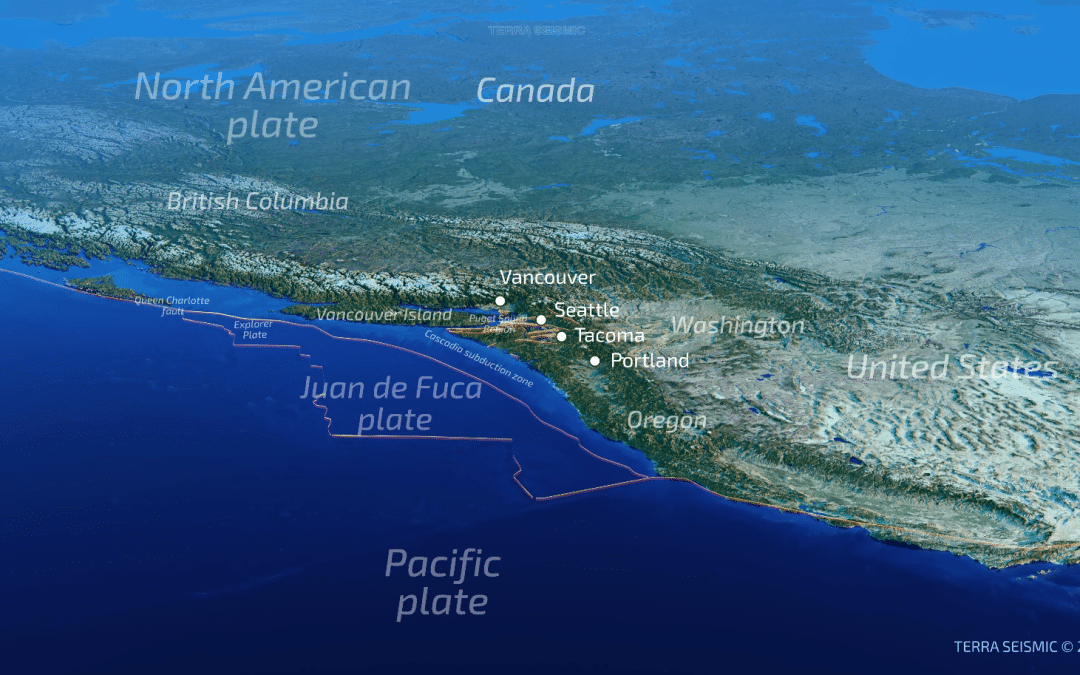Seismicity in the Cascadia zone of Canada is predominantly influenced by the Cascadia Subduction Zone, where the Juan de Fuca Plate is subducting beneath the North American Plate. This region spans from northern Vancouver Island to northern California and is known for its complex tectonic activity. Key factors defining seismicity in this area include:
Subduction Process: The primary source of seismic activity in the Cascadia zone is the subduction of the Juan de Fuca Plate beneath the North American Plate. This process can generate very large earthquakes, such as megathrust earthquakes, which can exceed magnitude 9.0. These events occur as the two plates lock together, releasing accumulated stress.
Crustal Earthquakes: In addition to subduction-related seismic activity, the region also experiences crustal earthquakes within the overlying North American Plate. These earthquakes occur at shallower depths and are typically less powerful than subduction earthquakes but can still cause significant damage.
Intraplate Earthquakes: Earthquakes can also occur within the subducting Juan de Fuca Plate as it bends and descends into the Earth’s mantle. These intraplate events add to the seismic risk in the region.
Volcanic Activity: The subduction process is responsible for volcanic activity in the Cascade Range, which includes active volcanoes such as Mount Baker, Mount Rainier, and Mount St. Helens. Volcanic-related seismicity includes swarms of small earthquakes and larger events related to the movement of magma.
Tsunami Risk: The potential for large megathrust earthquakes in the Cascadia Subduction Zone poses a significant tsunami risk for coastal areas. Historical and geological evidence, such as ghost forests and sediment layers, indicate that large tsunamis have occurred in the past, such as the one in 1700.
Slow Slip Events: The Cascadia Subduction Zone is also known for episodic tremor and slip (ETS) events, or “slow earthquakes.” These are periods when the subduction fault slips slowly over days to weeks, releasing seismic energy more gradually than typical earthquakes but still significantly influencing seismic stress.
Geological Complexity: The region’s geological complexity, including the interaction of multiple tectonic plates and numerous fault lines, contributes to varied seismic behavior.
Overall, the seismicity in the Cascadia zone of Canada is marked by the potential for catastrophic earthquakes with wide-reaching effects, including significant shaking and tsunamis, making it one of North America’s most significant seismic hazards.

